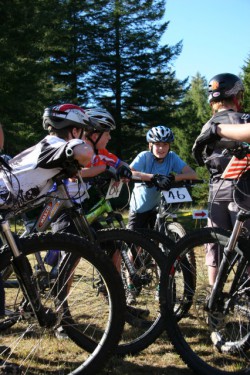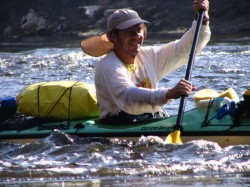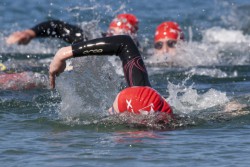|
Fitness Blog Covering Topics Of Interest Saturday, October 05 2013
This quick and simple salad is a delicious solution to the age-old question, “What’s for dinner?” It’s filled with wholesome ingredients, protein and fiber to enhance your hard earned fitness results. Servings: 6 For the Salad
For the Dressing
Instructions
Nutritional Analysis: One serving equals: 218 calories, 12g fat, 189mg sodium, 5g carbohydrate, 4g fiber, and 22g protein Monday, April 22 2013
Our bodies can obtain vitamin D from diet and make it from sun exposure. Even with these two routes for obtaining vitamin D, however, inadequate vitamin D is common, and deficiencies can be found on all continents, in all ethnic groups, and across all ages—a major concern, given the many ways that vitamin D helps protect our health. () There are a number of factors that increase the risk of having inadequate vitamin D, among them, lifestyle, sunscreen use, geographic location, skin tone, age, and body weight.
The bottom line: Low vitamin D can be found in all ethnic and age groups, around the world, for a host of reasons. Even if you are taking a standard multiple vitamin, the amount of vitamin D in most vitamins (400 IU) is not enough to prevent low blood levels. If you suspect that you are at risk of vitamin D deficiency, you can ask your physician to order a blood test for vitamin D. Sunday, June 10 2012
 © Betty Shepherd Summer is such a beautiful time of the year. Happy days with stunning sunrises, long, warm evenings and relaxing afternoons freshened up with lemonade and watermelon. Even on hot days, it is not difficult to find great exercises to keep your fitness level up. Summer is also special because you can finally do the workouts you might have been missing during the colder months of the year. You even can take advantage of the training sessions you would not necessarily do during the ideal training period for other sports in winter. You can add cross-training, as well. That means you can work out in other sports or add exercises that support what you normally focus on. It gives you an opportunity to prepare yourself for your upcoming autumn events or improve your fitness and skills for your favorite winter sports. Cross-training can give you a wide variety of workout choices which can enable you to reach your goals. In the summer, you have a wonderful opportunity to take advantage of the outdoors and experience beautiful connections to nature—the oceans, lakes, rivers, beaches, mountains, and shady woods and forests. Before we go on, however, I would advise getting a physical before you start your summertime fitness, making sure you are fit enough to work out in those warm conditions and are able to stay ahead of the game. It is a time that is good for more than just goal setting. You also can talk about your fitness ideas and workout possibilities for the upcoming months and decide if they are realistic for you. Your Favorite Summer WorkoutsOf course, in summer—as well as year-round—do activities you enjoy. They might include your favorite ball game, long hikes, water sports, or anything that is giving you excitement and happiness while exercising. Maybe you have some “wishes” you can turn into goals—like improving your fitness, learning to surf, running your first 5K, hiking a mountain, or biking some new trails by the end of the warmest time of the year. When you follow a path of realistic and achievable short-term goals, it can be much easier to stay motivated and make it fun to reach your goal.  © Betty Shepherd It always is a good idea to include your favorite workouts first, then, integrate new opportunities as the summer progresses. By the end of the warmest months, you will have explored and tried different exercises—alternatives you may have been curious about, perhaps, and had thought could be fun for you. Ball games, swimming, water sports, mountain biking, running, hiking, camping, for example, all are great exercises to try during the summer, especially if you had never done so before or if it had been a long time since you did them. And if you are ready to take on multiple challenges, nothing might be better than combining a number of activities. My favorite summer workouts are those easy and relaxing evening runs, when the sun starts to set and the air is getting fresher, when I can play with those long shadows in the forest. I often combine them with a swim, diving into a lake after my run. Sometimes I jog a few miles to a beach by a lake and cool-off by swimming for some distance, depending on how I feel after my run. I used to do this often as a kid and later during my track season. I have enjoyed it ever since. As the previous comment illustrates, summer workouts are a great way of rekindling happy childhood memories: those long days of carefree summer vacations from school, playing baseball, basketball, or soccer, or maybe completing a track session in the stadium. Perhaps you have a loving memory of the smell of freshly cut grass. That wonderfully distinctive aroma always reminds me of the newly-mown infield at the local track when I was a kid. During the warmest time of the year, it is best to wait for temperatures to have fallen in the early morning or the late evening. Any kind of ball game—basketball, baseball, soccer, or tennis—is fun to play in the cooler evenings. With dusk still far away, you can arrange to get together with your friends after work and add informal versions of these games to your other activities. This can be fun and often makes it easier to stay fit. When I was growing up and started running, we played lots of ball games as warm-ups for our training sessions. A game of team handball or volleyball was just right for us kids. Coming from Germany, soccer always was the favorite. Maybe you can join a group of friends to play a game? You will soon find the countless sprints to get the ball or trying to keep it will definitely give you good cardiovascular exercise. Huffing and puffing, I sometimes had to stop running to catch my breath. For many of us, nothing is nicer than taking part in summer water sports. You can enjoy the whole day at a lake or the ocean with activities such as paddle boarding, kayaking, surfing, snorkeling, or playing different water ball games with your friends. These all are sports that can provide fun activities for you and your entire family. If you don’t have the luxury of a few free days, try a nice swim before or after work, or, if time permits, during your lunch break. Swimming is not only a great cardiovascular workout, and refreshing during the summer months, it also can help you recover from more strenuous training like biking or running. And, at the same time, it will improve deeper breathing.  Dave enjoys kayaking across the state of Florida. © Dave Bracknell A former client of mine started with a few sprint triathlons in the summer and quickly moved up to the Olympic distance in winter. He later discovered that kayaking would be fun for him, too. I got an email message from him with breathtaking photos of the ocean and his kayak resting on a beach. He wrote that he just kayaked across the state of Florida in a charity event. I can imagine that he had a fun pool party afterwards! It is a great idea to start a party with your family and friends in late afternoon, playing ball and enjoying swim games, and later taking in the sunset while having a super-tasty barbecue. Could an interesting hike become one of your favorite workouts? Even a leisurely “glow worm and fire flies” hike on a cool summer night might be something you would enjoy. It can be such a fun activity for the whole family. And if you choose a long day hike, you might want to top it off by camping out overnight under the stars. Change the Venue, Adjust Your Goals, and Explore Cross-TrainingSure, you want to avoid the hottest part of the day—so go inside! Join a gym for the warmest months, and instead of running or biking outside, try the treadmill or the stationary bike or one of the many other aerobic exercise machines available at most gyms. You always can exercise outside during the cooler temperatures around sunrise and sunset. The nice thing about summer events is that most of them take place in the morning or evening hours. Nothing is better than completing your workout or event and meeting friends for a late breakfast afterwards. “It’s just a piece of pancake!” Adjust your fitness goals for the warmest time of the year. As always, it is best to set realistic, achievable, short-term goals. I recommend focusing on a few shorter workouts with higher intensity and playful variations in speed. Perhaps your goal might be to become faster in your sport during the summer. Then in autumn, you can add some endurance and focus on longer events again. Once you accomplish your summer goals, you can use your improved fitness to achieve great results in your events later in the year.  © Betty Shepherd Here are some ideas. If you are a triathlete, you might want to improve one of your disciplines to be better prepared for competition in the fall. To work on your swimming might be a good idea. Or you might change from running to more biking, and in the colder months add longer running workouts again. There are great duathlon competitions in the summer. To work on improving your speed, you may decide to prepare for a sprint triathlon or a sprint duathlon, instead of the longer versions. Many runners may just have finished a spring marathon. The warm summer months are ideal to prepare for a 5K, and in late August one could prepare for a 10K. Then, in September, you can get ready for a half marathon. All the training and goal setting can be done with the ultimate aim of a faster marathon. Or simply enjoy the shorter distances as your main event all summer. That is good, too! You also can switch from one sport to another. Think “off season training.” For runners, bike and swim instead of doing high mileage running. Some bikers go from the road into the forest and mountain bike, it is a great way to improve your skills. Enjoy water sports like kayaking or paddle boarding. Compete in team swimming events, relays are always great fun. A good goal could be to work on other elements of fitness, like strength or technique training, especially if these are areas in which you already want to improve. To do this, you may want to include these new elements in your routine during the summer so you are better prepared for your upcoming events later in the year. I love these elements of cross-training. They can give you a chance to try out a variety of workouts—not doing the same activity every day. And they can be done indoors during the warmest hours of the day. Think about it as something you can look forward to complement your training. Deep-water running, core strengthening, light weights, stretching and yoga… they all can be added to your summertime fitness routine. In this manner, you can condition your body for your fall events—to be a better runner, biker, or golfer—and for your winter sports to be a stronger skier, snowboarder, or skater. Be prepared to adjust your workouts according to the weather conditions on any given day. It can be hot, humid or rainy, and setting a new and easier goal will help you achieve them. Maybe you, too, would love to combine some of your runs with a cooling swim afterwards. And finally, a general suggestion for your summer workouts: start them slowly, increasing your workload in gentle increments. The weather conditions can be challenging and even deceptive. By starting your workouts carefully, keeping your strength in reserve, you will be able to keep your body temperature and your pulse lower. And you will not get so fatigued. In many climates, temperatures can change dramatically over the course of the day, so always be aware of the conditions in which you do your activities and training. Of course, during summer months, adequate hydration should always be on your mind. Fitness Programs and Sport Events You Can JoinCheck out recreational leagues and programs for adults and kids in your area. Your town, local fitness club, and local businesses might offer programs for many sports and events, and maybe you would like to join one of them. This way you also might meet new friends and enjoy staying fit together. It might even not feel like working out hard at all. There are many events over the summer that may be of interest to you. Some of them are charity rides or runs where you also can get the satisfaction of helping your community or a charity that touches your heart like SOS Outreach with which Take The Magic Step is a partner. In “Summertime Fitness: Part II,” I will explore proper hydration and offer a few thoughts on summer nutrition. Until then, I hope you can enjoy your fun and cool summertime fitness!
|
 |




